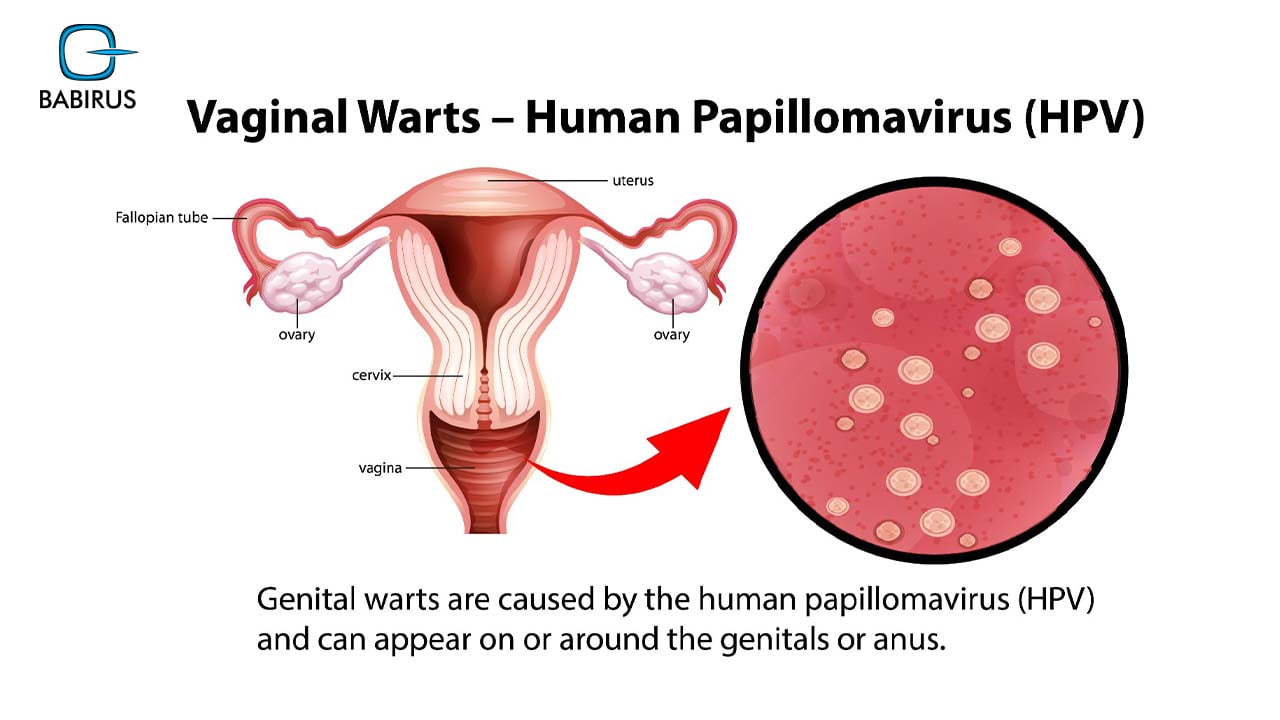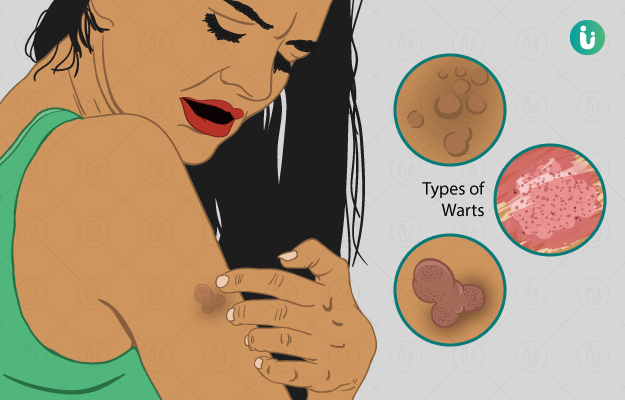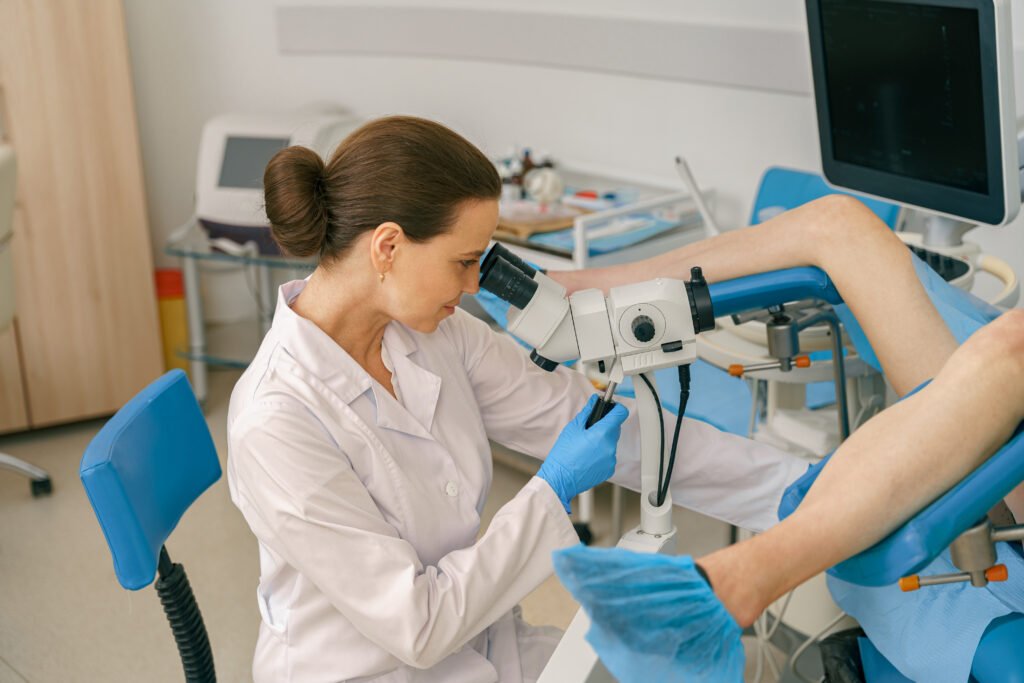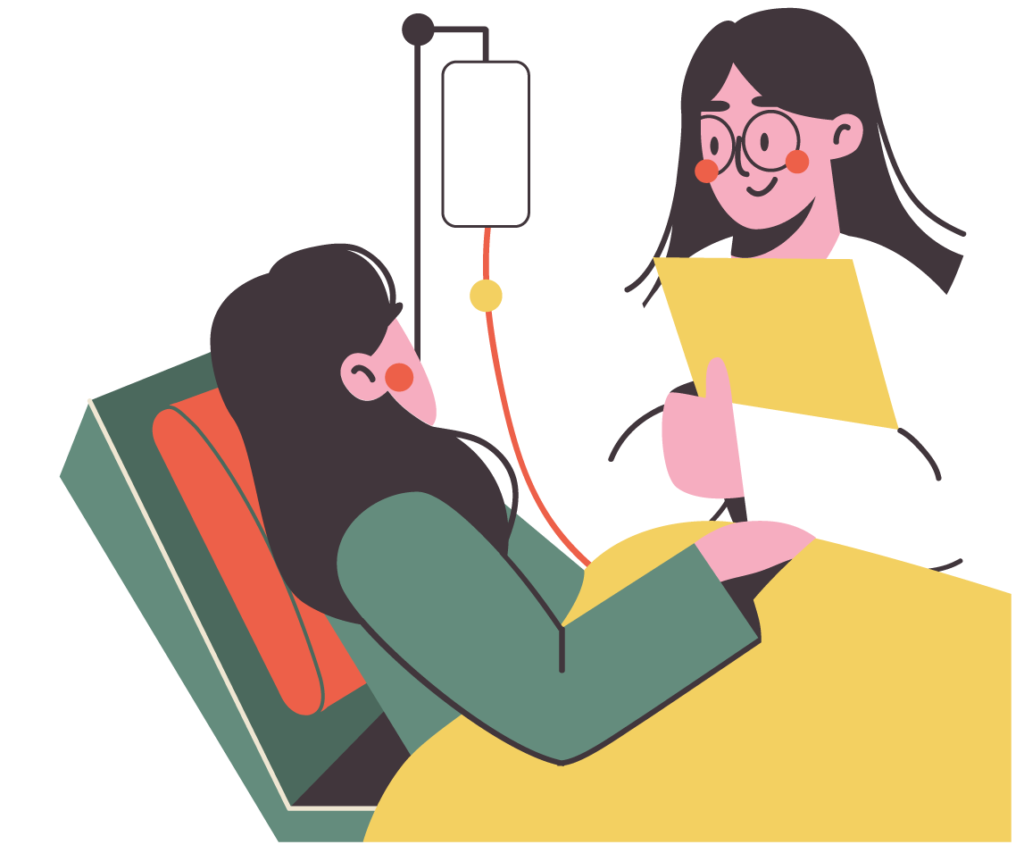Human Papillomavirus (HPV): Symptoms, Treatment & Prevention in Malaysia
Table of Contents

In Malaysia, HPV infections may not show symptoms, but genital warts can appear. Skin-to-skin contact during sex spreads HPV, including through sharing sex toys. HPV can lead to genital warts and cervical dysplasia, potentially progressing to cancer. DNA testing helps detect risks early, more sensitive than Pap smears. Vaccination and regular screenings are key for prevention, advised for women aged 25 to 64. Treatments for HPV include medications and procedures like LEEP. Immunotherapy offers promise in managing HPV cancers. Addressing cultural challenges is vital for effective prevention. Understanding HPV in Malaysia is crucial for cancer prevention and early intervention.
Symptoms of HPV in Malaysia
In Malaysia, HPV infections often don’t exhibit symptoms, making it crucial to understand the potential indicators of the virus. However, some individuals with HPV in Malaysia may develop painless growths known as genital warts around the genital area. These warts can appear around the vagina, penis, or anus in affected individuals, serving as visible signs of HPV infection.
While HPV infections in Malaysia can persist for years without causing symptoms, even in individuals who’ve been sexually inactive, it’s essential to note that the virus can still be present and potentially transmissible. Given the asymptomatic nature of most HPV infections in Malaysia, regular screenings and testing are vital for early detection and treatment. Testing for HPV in Malaysia typically involves cervical screening, focusing more on detecting the virus itself rather than waiting for symptoms to manifest.
Understanding the symptoms of HPV in Malaysia, such as genital warts, can help individuals recognize potential signs of infection and seek appropriate medical care. Early detection and management of HPV infections are crucial in preventing complications and reducing the risk of transmission to others.

Transmission of HPV
HPV can be transmitted through skin-to-skin contact in the genital area, including vaginal, anal, or oral sex. Sharing sex toys can also lead to infection, highlighting the various modes of transmission.
Preventing HPV spread is crucial, as even the first sexual encounter can result in contracting the virus.
HPV Transmission Routes
Skin-to-skin contact in the genital area during sexual activities is a primary route for the transmission of HPV. HPV can be passed through vaginal, anal, or oral sex, leading to infection with various types of the virus. It’s important to note that HPV can also be transmitted through non-penetrative sexual activities, such as genital touching.
Kissing, however, isn’t a common mode of HPV transmission. Additionally, sharing sex toys can facilitate the spread of HPV between partners. It’s crucial to understand that HPV doesn’t always require penetrative sex for transmission; mere skin contact in the genital region is sufficient for the virus to spread.
Engaging in sexual activities with multiple partners increases the risk of HPV transmission and subsequent infection. To prevent the spread of HPV, it’s essential to practice safe sex, limit the number of sexual partners, and consider vaccination where applicable.
Understanding the transmission routes of HPV is crucial in taking proactive steps to protect oneself and others from this common sexually transmitted infection.
Preventing HPV Spread
Utilizing preventive measures is essential in minimizing the transmission of HPV through various forms of sexual contact. Safe practices such as using condoms consistently and correctly during vaginal, anal, or oral sex can reduce the risk of HPV transmission. It’s crucial to note that while condoms offer some protection, they may not cover all genital skin areas where HPV can be present. Additionally, avoiding sharing sex toys can help prevent the spread of HPV through skin-to-skin contact in the genital area.
Education campaigns play a vital role in raising awareness about HPV transmission and prevention. Providing accurate information about the risks associated with the virus, emphasizing the importance of safe sexual practices, and promoting regular screenings can help individuals make informed decisions to protect themselves and their partners.
Associated HPV Conditions
Developing an understanding of the various conditions associated with HPV is essential for making informed decisions about preventive measures like vaccination and screening.
HPV infections can lead to the development of genital warts, which are painless growths that can appear around the vagina, penis, or anus. These warts are caused by certain types of HPV and are usually harmless but can be bothersome.
Moreover, HPV is also linked to dysplasia, which refers to abnormal cell changes that can occur in the cervix, anus, or other areas affected by the virus. Dysplasia can range from mild to severe and is important to address as it can progress to cancer if left untreated. This underlines the significance of regular screenings and vaccination to detect and prevent such conditions early on.
High-risk HPV types are specifically associated with various cancers, including cervical, anal, penile, vulval, vaginal, and head and neck cancers. By understanding these potential outcomes of HPV infection, individuals can take proactive steps to protect themselves and reduce the risks of developing associated diseases.
Regular screenings and vaccination play a crucial role in preventing these conditions and promoting overall health and well-being.
HPV Testing Methods
When it comes to HPV testing methods, there are two primary options: HPV DNA testing and PAP smear screening.
These tests are crucial in detecting high-risk HPV types linked to cervical cancer and play a vital role in preventing its development.
If you fall within the recommended age range, getting tested can significantly contribute to safeguarding your health.


HPV DNA Testing
HPV DNA testing plays a crucial role in detecting high-risk HPV types in cervical cells, aiding in the early identification of potential cervical cancer risks. This testing method is known for its accuracy in pinpointing specific HPV strains like HPV-16 and HPV-18, which are strongly linked to cervical cancer development.
Compared to Pap smears, HPV DNA testing is more sensitive in detecting HPV infections, especially in women aged 30 and older, particularly those with abnormal Pap smear results. Following HPV DNA testing guidelines is essential for guiding appropriate follow-up actions and treatment plans.
PAP Smear Screening
Utilize PAP smear screening as a fundamental method for detecting HPV infections by collecting cervical cells for testing.
In Malaysia, screening guidelines recommend PAP smears for women aged 25 to 64 as a crucial part of cervical cancer detection.
PAP smears play a vital role in identifying abnormal cervical cells caused by HPV, enabling early intervention and treatment.
By conducting regular PAP smear screenings, healthcare providers can detect HPV-related abnormalities early, potentially preventing the progression to cervical cancer.
It’s important to note that PAP smear testing doesn’t involve a blood test but is a valuable tool in safeguarding against cervical cancer.
Adhering to recommended screening schedules can significantly impact women’s health by enabling the timely detection and management of HPV infections, ultimately reducing the burden of cervical cancer in the population.
Regular PAP smear screenings are a cornerstone in the prevention and early detection of cervical cancer, emphasizing the importance of following screening guidelines.
Prevention of HPV
To prevent HPV infections in Malaysia, various strategies such as vaccination programs targeting adolescents and promotion of healthy lifestyle habits are crucial. HPV prevention in Malaysia includes vaccination campaigns that target girls and boys aged 11-12 to protect against cervical cancer and genital warts. These vaccination programs are essential in reducing the burden of HPV-related diseases in the population.
In addition to vaccination, promoting healthy lifestyle choices plays a significant role in HPV prevention. Encouraging behaviors like smoking cessation, consistent condom use, and maintaining a healthy diet combined with regular exercise can help reduce the risk of contracting HPV infections. Community outreach efforts are vital for disseminating information about the importance of these preventive measures.
Public education and awareness campaigns are key components in increasing the uptake of HPV vaccinations and promoting preventive measures against HPV infections. Addressing barriers such as lack of awareness and cultural sensitivities through targeted education and outreach efforts is crucial.
Treatment Options for HPV
Effective management of HPV often involves targeted treatments to address symptoms like genital warts or abnormal cell changes. For genital warts, topical medications such as podophyllotoxin or imiquimod are commonly prescribed. In cases of abnormal cell changes, procedures like loop electrosurgical excision procedure (LEEP) or cone biopsy may be necessary to remove affected tissue and prevent the progression to cancer.
When it comes to HPV-related cancers, treatment options may include surgical interventions like removing the affected area, radiation therapy to target cancer cells, chemotherapy to kill cancer cells, or targeted therapy to block specific molecules involved in cancer growth. The choice of treatment depends on the type and stage of cancer, as well as the individual’s overall health. Regular monitoring and follow-up are crucial for tracking the progression of HPV-related conditions and evaluating the response to treatment.
In addition to traditional treatments, immunotherapy options are being explored for HPV. Immunotherapy works by boosting the body’s immune response to target and destroy cancer cells. Clinical trials are ongoing to assess the efficacy of immunotherapy in treating HPV-related cancers, offering new hope for individuals facing these conditions.
Early detection and prompt treatment play a vital role in improving outcomes and reducing the risk of complications associated with HPV infections.
Cultural Challenges in HPV Prevention
Addressing cultural challenges in HPV prevention, particularly in Malaysia, involves overcoming misconceptions and sensitivities that affect the uptake of vaccines like Gardasil or Cervarix. Cultural misconceptions about the necessity of HPV vaccination and the lack of awareness regarding vaccines like Gardasil or Cervarix contribute to these sensitivities. Misconceptions about HPV vaccination and cultural sensitivities are significant barriers to effective HPV prevention efforts in Malaysia.
To combat these challenges, it’s essential to implement strong awareness campaigns and focus on effective information dissemination strategies. By educating the public about the importance of HPV vaccination and addressing cultural misconceptions surrounding it, the uptake of vaccines can be improved. These awareness campaigns should be tailored to the specific cultural context of Malaysia to ensure maximum impact.
Furthermore, healthcare providers play a crucial role in dispelling myths and providing accurate information about HPV vaccines. By engaging with communities, healthcare professionals can address cultural sensitivities and build trust in the vaccination process. Open dialogues, culturally sensitive messaging, and targeted outreach efforts can all contribute to overcoming cultural challenges in HPV prevention in Malaysia.
Increased education and awareness are key to promoting the uptake of HPV vaccines and reducing the burden of HPV-related diseases in the population.
Conclusion
In conclusion, understanding the symptoms, transmission, associated conditions, testing methods, prevention strategies, and treatment options for HPV in Malaysia is crucial for promoting overall public health.
By staying informed and proactive in preventing HPV infections, individuals can reduce their risk of developing related health complications.
It’s important to address cultural challenges in HPV prevention to ensure that all populations have access to necessary information and resources for protecting themselves against this common infection.
Stay safe with kliniknearme.com.my

FAQ
Frequently Asked Questions
When it comes to HPV treatment and prevention, a range of options are available. Natural remedies, such as green tea extract, may offer some benefits, but medical advancements like the HPV vaccine are the most effective way to prevent HPV infections and related diseases.
Regular screenings and safe sex practices are also crucial in preventing the spread of HPV. It’s important to consult with healthcare providers for the most suitable treatment and prevention strategies.
In Malaysia, the HPV program focuses on HPV vaccine distribution and public awareness campaigns. Efforts are made to provide access to the Gardasil 4 vaccine to prevent cervical cancer caused by HPV infection.
Public awareness campaigns play a crucial role in educating the population about the importance of HPV vaccination in reducing cervical cancer risk. These initiatives aim to increase vaccination coverage and ultimately reduce the burden of HPV-related diseases in Malaysia.
To prevent HPV effectively, consider getting vaccinated to protect against cervical cancer and genital warts.
Regular screening programs, like Pap smears, are crucial for early detection.
Utilize safe sex practices, such as condom use, to lower transmission risks.
Public education campaigns are key for raising awareness.
Healthy lifestyle choices, including a balanced diet, exercise, and avoiding smoking, also aid in HPV prevention.
These recommendations are essential for safeguarding your health.
For HPV treatment, options include natural remedies, vaccination, surgical procedures, and topical treatments.
Natural remedies may help boost your immune system.
Vaccination can prevent certain HPV strains.
Surgical procedures like cryotherapy can remove genital warts.
Topical treatments target warts directly.
